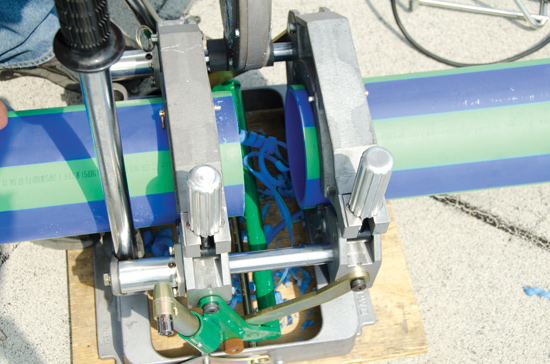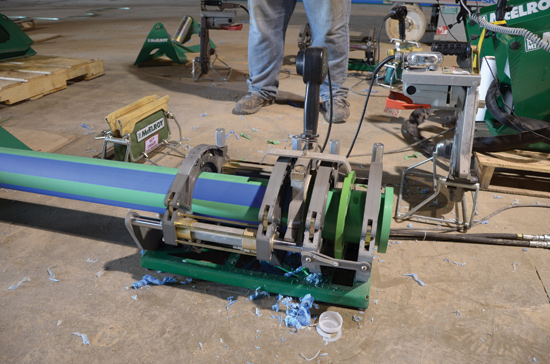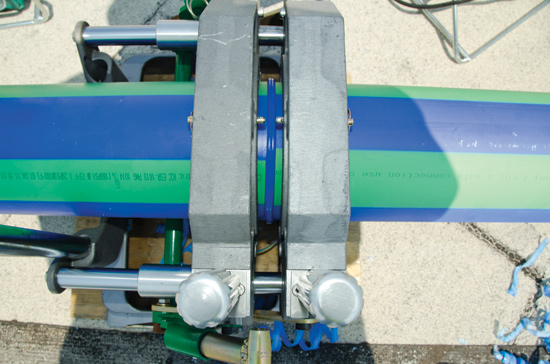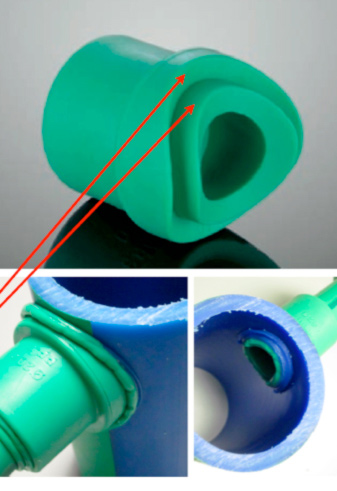Polypropylene-Random (PP-R) Piping Systems Serve Multiple Applications
Heat Fusion
PP-R connections are mostly made through heat welding or heat fusion without any adhesives, solvents, solder or mechanical connections. Two similar plastics are simultaneously heated to a “melt” state and allowed to cool together under pressure. As the PP-R molecules cool, they bind with each other and turn into one piece, the way they would during extrusion or molding. Different styles of PP-R heat fusion include socket fusion, outlet fusion and butt welding. Another style is electrofusion, a means of heat fusing pipe and fitting in tight spaces. It is mainly for retrofits or instances where other irons will not fit. It is more expensive and is more of a tight-space solution than a go-to method.
The result is a seamless bond between the materials that possesses the same qualities as the original material and takes from a few seconds on smaller sizes to a few minutes on larger diameters to achieve, with no adhesives, solvents, solder or mechanical connections. The fused material has the same strength as the pipe wall, so there is no path for leaks or blowouts. This provides a certain level of flexibility in the assembled pipe that makes it easy to prefabricate and move on-site without the risk of the joints cracking and leaking. This flexibility and homogeneous joint region also allows for a wider range of applications and protects the pipe from seismic stresses.
For installations with branch lines, fusion outlets offer many advantages over traditional reducing tees. They generate less friction, thus lowering the pressure loss of the entire system.



Photos courtesy of McElroy Manufacturing
The butt fusion process requires shaving the faces off the ends of the pipe so they can be properly connected, introducing a heating iron to melt the pipe and then pressing them together, resulting in a permanent bond.

Photos courtesy of Aquatherm
PP-R heat fusion outlets are joined on the O.D. of the tube as well as through the thickness of the sidewall (red arrows).









